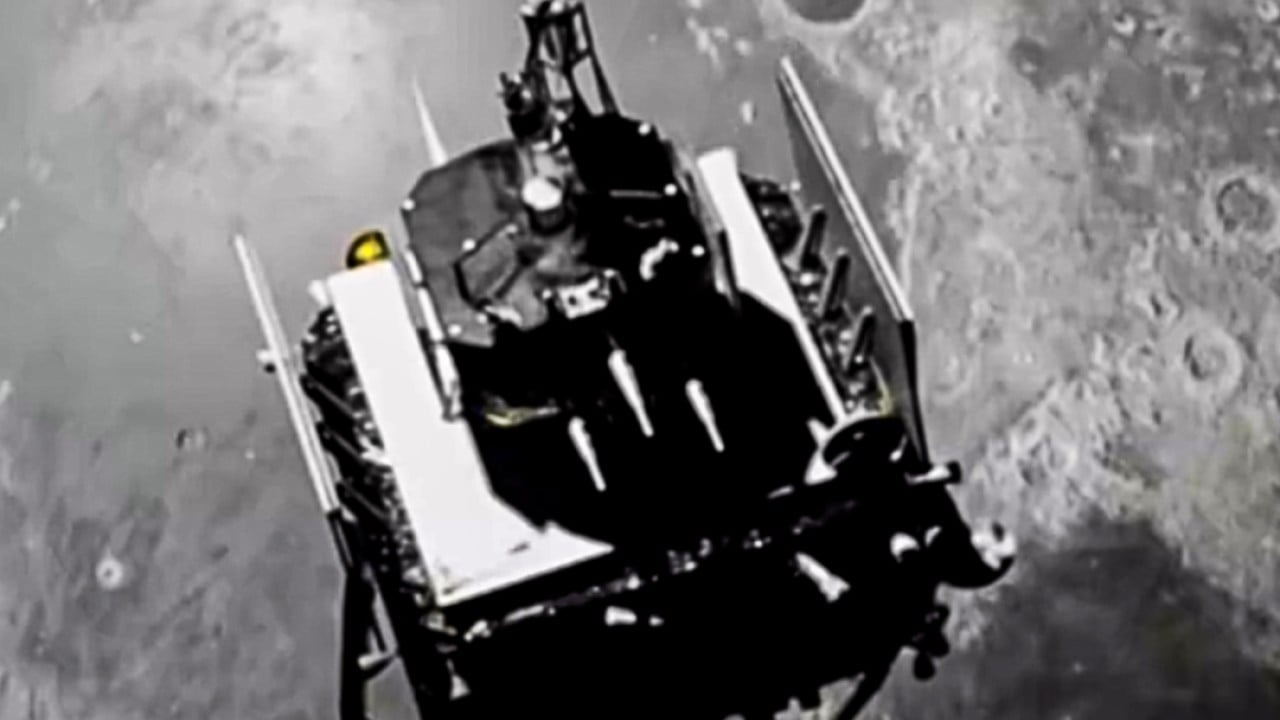The moon could soon have its own satellite navigation system, according to a proposal by Chinese scientists.
The team from the Beijing Institute of Spacecraft System Engineering proposed the construction of 21 satellites around the moon which would provide real-time, high-precision navigation to support China’s lunar ambitions.
The satellites will be deployed in four types of orbits over three phases, featuring a sustainable and cost-effective design, according to a paper published last month in the journal, Chinese Space Science and Technology.
While the paper did not specify a construction timeline, China aims to put astronauts on the moon by 2030 and to build a research base at the lunar south pole with international partners around 2035.
“A satellite constellation in near-lunar space can provide real-time, high-precision navigation and positioning for lunar surface movement, landing and take-off, and support high-frequency human exploration of the moon in the long run,” wrote the team led by Peng Jing, deputy chief designer of China’s Chang’e-5 mission.
“Our study presented a road map to assemble such a constellation step by step, expanding its coverage from the lunar south pole region to the entire moon.”
On Earth, global navigation satellite systems such as the United States’ GPS and China’s BeiDou are in wide use, making it easier to find locations and plan routes.
Such systems usually comprise 20 to 35 satellites and have an accuracy of a few metres. Each satellite beams off radio signals, allowing the user to determine their location and time using a combination of signals from at least four satellites.
In the study, Peng and his team assessed three major factors of a lunar navigation system: the “quadruple coverage” of having signals from at least four satellites at any given time, the navigation precision, and the construction and maintenance costs.
They found that during the first phase of construction, just placing two satellites in a highly elliptical, extremely stable orbit would guarantee full-time communication between Earth and the moon’s south pole region, with minimal use of fuel for station-keeping once they reach orbit.
In the second phase, by adding nine satellites and two orbit types, the constellation could provide full-time navigation for the lunar south pole region and support around-the-clock communication between Earth and any place on the moon.
In the final phase, placing a total of 21 satellites in four types of orbits, the complete constellation could give relatively accurate positioning for any place on the lunar surface for more than 70 per cent of the time.
The team planned to optimise the parameters of each orbit type and develop a more systematic design for the lunar navigation constellation, the researchers wrote.
China has developed and deployed two communications relay satellites, Queqiao-1 and Queqiao-2, in near-lunar space to support its historic missions to explore the far side of the moon in recent years.
The US, Europe and Japan have also announced plans to develop moon-based navigation constellations.
One such plan is Japan’s Lunar Navigation Satellite System, proposed in 2022. It will consist of eight satellites circling the moon in highly elliptical orbits, providing communication, positioning and navigation services for the lunar south pole region.




